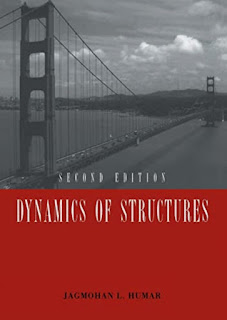Structural engineers play the most important role in designing and construction practices. The past few disasters have exposed serious deficiencies in structural engineering practices, mainly due to a lack of knowledge and understanding among engineers. With the increased awareness about disaster preparedness, the demand for learning resources has increased. The design codes for all countries (as IS codes for India) with their modified recommendations show light on the basics of how to design a structure. Non-exposure to the world of books may set engineers back with ideas and concepts required for practical difficulties of designing.
Here is a list of ten books, a must-read for structural engineers:
1. Building Structures Illustrated By Francis D.K. Ching
Gujarat State Disaster Management Authority has sponsored the research by the authors led by C.V.R. Murty and the book is a bible for structural engineers and students everything is explained in a simple way. All the concepts are discussed as per the Indian geological scenario.
It's a step-by-step guideline for the analysis and design of structures considering the effect of earthquake shaking on structures. The textbook-like approach will definitely help students of UG and PG levels. Practicing engineers can also be benefitted revising the concepts again.
This book describes everything in Foundation Engineering from the Geotechnical properties of soil to foundation types including soil improvement techniques. This book includes one very interesting chapter that is the Foundation on difficult soils i.e., on expansible, collapsible, and sanitary soils.
Without studying Structural Dynamics, knowledge of structural engineering is incomplete. As every applied load on a structure is practically time-varying and dynamic in nature, all material, members, and various objects resting on the structure are subjected to dynamic disturbances. Analysis of responses due to vibration has considerable importance for the design of structures.
This is a textbook-like approach, also widely used as a practitioner's reference, including the latest suggested design and analysis techniques. This book emphasizes computer-aided methods and the Finite-Element Method (FEM) to meet the modern methods of analysis.
Tall building design involves steel, concrete, and composite systems and requires a different approach to evaluate the safety conditions. This book is a standard for tall buildings to study wind and seismic behavior on structures. Present-day design is often carried out using computer software, dependency on this software can be inadequate.
These days structures in urban areas became more complex as the shapes of the plots are irregular and the builder wants to utilise each and every inch of the plot for a very obvious reason. An architect may show creativity, but for a structural designer, it's very complex to design an irregular shape structure as those are more vulnerable to horizontal forces than regular ones. Analysis and use of diaphragm and shear walls are presented in this book.
Concrete is the most widely used material for structural construction in the entire world. It is very essential to understand the basic behaviors of concrete for students and practicing structural engineers. Latest innovations, methodologies, and development in this field are being introduced.

















